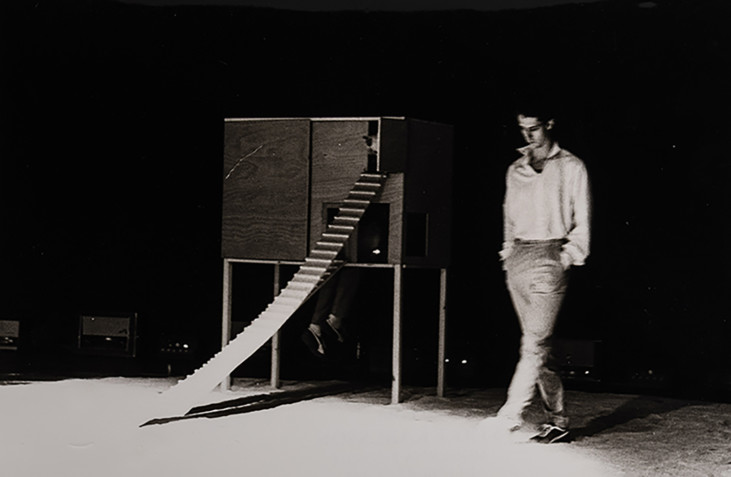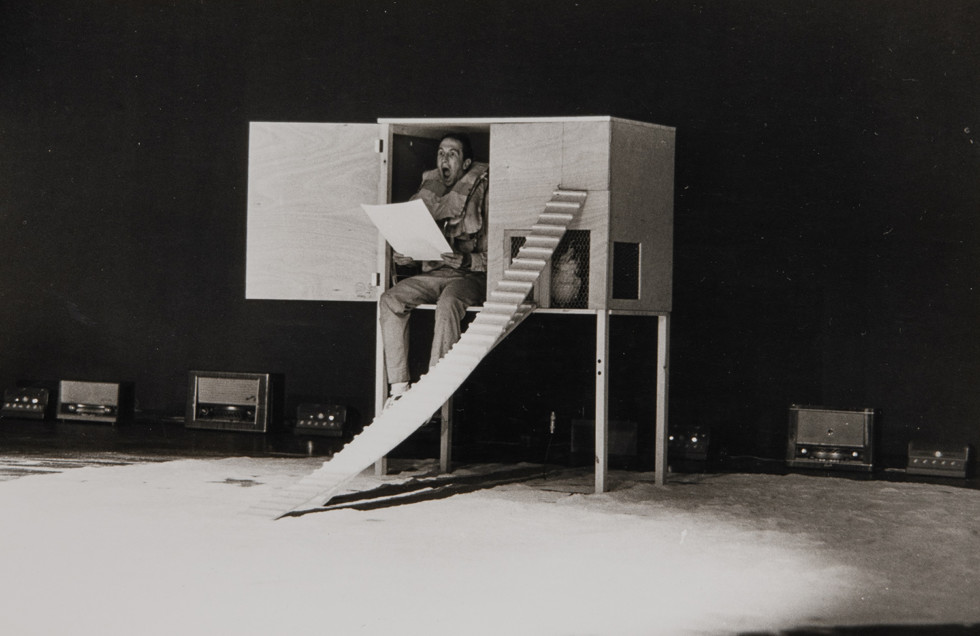
Robert Rauschenberg in “Jag vill gärna telefonera", 5 New York Evenings, 1964 Photo: Stig T. Karlsson/Moderna Museet
Robert Rauschenberg and Surrealism
Symposium and performance
3.10 2025
Stockholm
Robert Rauschenberg (1925–2008) is regarded as one of the most important artists of the post-war era and has influenced practitioners in a range of directions and practices, such as Pop, Neo-Dada, assemblage, Fluxus, Nouveau réalisme and performance art.
“I don’t mess around with my subconscious,” Robert Rauschenberg himself said. “I try to stay wide awake.”* Despite the statement made in a 1965 interview with the Archives of American Art, Rauschenberg’s art is closely rooted in Surrealism and its influences. Although the artist distanced his work from Surrealism and emphasized its literal qualities, critics of the time identified poetic, metaphorical, and associative dimensions in his work, particularly in the late 1950s and 1960s.
Robert Rauschenberg and Surrealism
Symposium and Performance
Date
Friday 3 October 2025
Time
10–16.15
Place
In the Auditorium, floor 2
Language
English
Price
Free admission, pre-registration required
Contact: Alexander Kateb, Moderna Museet
Robert Rauschenberg and Moderna Museet
The relationship between Robert Rauschenberg and Moderna Museet began with the landmark exhibitions Movement in Art (1961) and 4 Americans (1962). The museum’s first director Pontus Hultén had encountered Rauschenberg’s work in Paris, where it was met with enthusiastic acclaim. During this period, Rauschenberg exhibited several times alongside the Surrealist group, notably participating with the early combine “Bed” (1955) in the international E.R.O.S. exhibition at Galerie Daniel Cordier in 1959, which celebrated eroticism. In New York his work was included in the 1968 survey exhibition Dada, Surrealism and Their Heritage at The Museum of Modern Art (MoMA).
This often-overlooked connection to Surrealist legacies can be traced further in Rauschenberg’s later work — for example, in the playful, high-tech experiment Mud Muse (1968–1971), with its allusions to formlessness, chance, and the subconscious. The sculpture also reflects the prominence in his work of dance, sound, and performance, not least in his long running collaboration with John Cage and Merce Cunningham.
PROGRAMME
10 The doors open
10.20 Introduction
Welcome and introduction by Museum Director Gitte Ørskou and Anna Tellgren, Curator of Photography and Head of Research at Moderna Museet
10.30 Gavin Parkinson
Une véritable bombe: Hervé Télémaque’s ’Cold Surrealism’ and Robert Rauschenberg’s Combine Paintings
11.30 Susan Davidson
What’s Mud Got To Do with It?
12.15–13.15 Lunch
Lunch break
13.15 Kristoffer Svensson Noheden
Assemblage in and After EROS: Exalting Death, Dreaming of Animals
14 Helen Molesworth
Thinking about, with, and through Monogram
15 Coffebreak
Coffebreak
15.30 Magdalena Holdar
A cake, a cow, and choreographies of sound: the unexpected unfolds in Five New York Evenings
Magdalena Holdar then introduces Petronio Projects reconstruction of “Jag vill gärna telefonera” (I Would Like to Make a Phone Call)
16 Performance: Jag vill gärna telefonera
Performance of the work “Jag vill gärna telefonera” (I Would Like to Make a Phone Call) with Ryan Pliss and Nicholas Sciscione
Jag vill gärna telefonera (I Would Like to Make a Phone Call)
In 1964, Moderna Museet and Fylkingen jointly organised five New York evenings with ballet, concerts and happenings. Stockholm was visited by the Merce Cunningham Dance Company with John Cage, David Tudor, Yvonne Rainer, Robert Morris and Robert Rauschenberg. Between 1961 and 1965, Steve Paxton (1939-2024) toured as a dancer in the Merce Cunningham Dance Company. During that time he also made his own choreographic work and collaborated with Robert Rauschenberg, the company’s lighting, set, and costume designer.
For Five New York Evenings the two premiered “Jag vill gärna telefonera” (I Would Like to Make a Phone Call), in which they interpreted a collage of mostly sports photographs by mimicking each pose while freely linking the images through their physical movement and contact.
The work anticipates Contact Improvisation — a collaborative movement practice Paxton developed in his 1972 performance “Magnesium” in which participants use touch rather than sight to generate movement together. In 1982, Paxton gave the score for “Jag vill gärna telefonera” to his students Stephen Petronio and Randy Warshaw. For the performance at Moderna Museet 3–4 October, Ryan Pliss and Nicholas Sciscione of Petronio Projects will interpret the 1982 version.
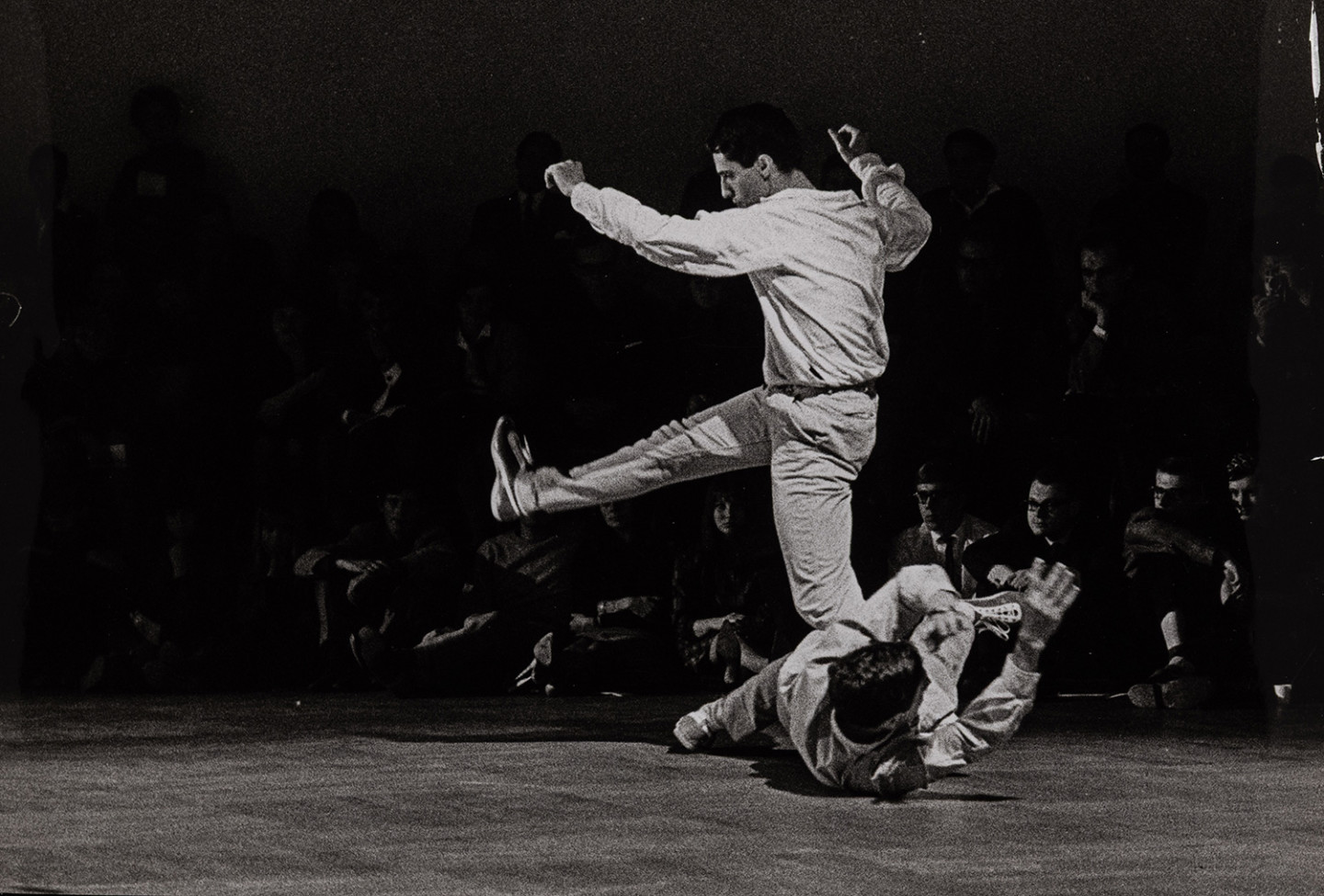
Symposium and Performance realized on the occasion of
Rauschenberg100, with support from the Robert Rauschenberg Foundation
Courtesy of the Steve Paxton Papers
Department of Culture and Aesthetics, Stockholm University
* From an interview with Robert Rauschenberg, 21 December 1965, Archives of American Art, Smithsonian Institution: https://www.aaa.si.edu/collections/interviews/oral-history-interview-robert-rauschenberg-12870
Performance: Jag vill gärna telefonera
Ryan Pliss and Nicholas Sciscione from the Petronio Projects bring the performance piece “Jag vill gärna telefonera” to life once again. …
Performance: Jag vill gärna telefonera
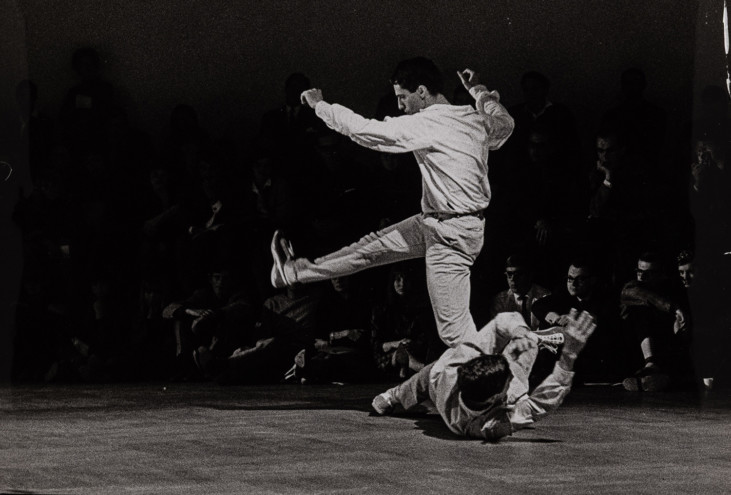
Monogram
Robert Rauschenberg’s iconic work “Monogram” is now exhibited in The Study Gallery. Experience our world-famous goat alongside other works and …
Robert Rauschenberg and the Moderna Museet Collection
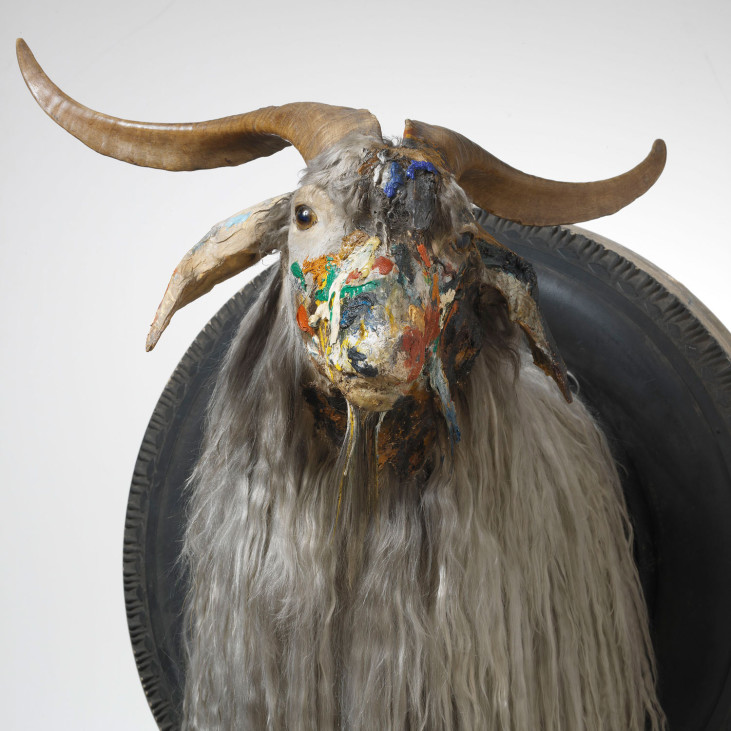
Become a Member
Come as often as you like! Purchase a membership in Klubb Moderna and enjoy free entry to Moderna Museet’s collection and all exhibitions. You can …
Klubb Moderna
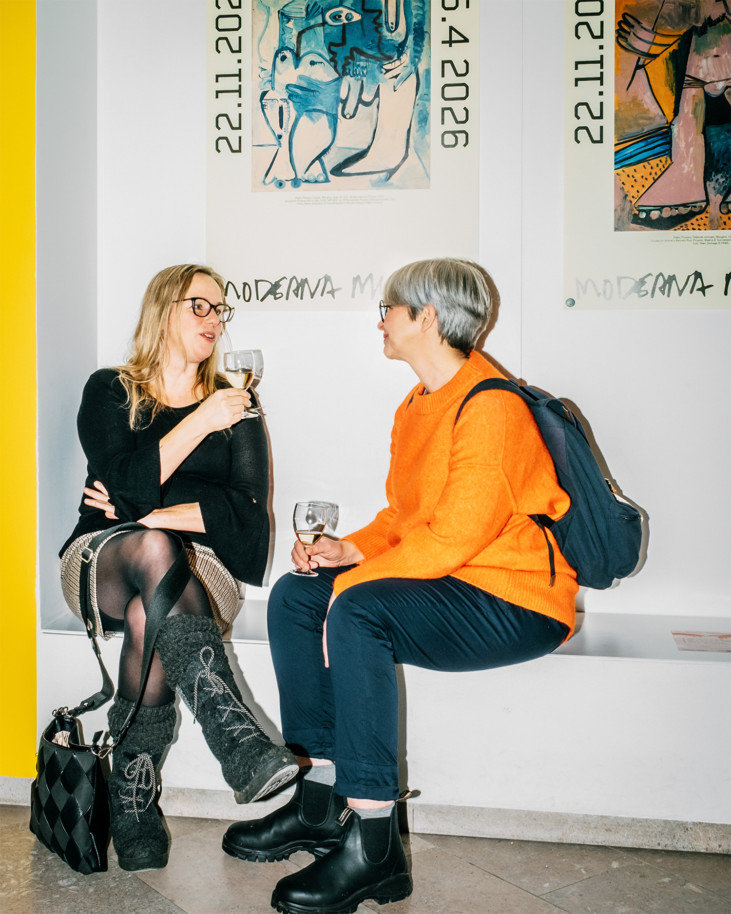
Newsletter
Subscribe to our newsletter! Get the latest news about Moderna Museet directly to you by e-mail. …
Newsletter


